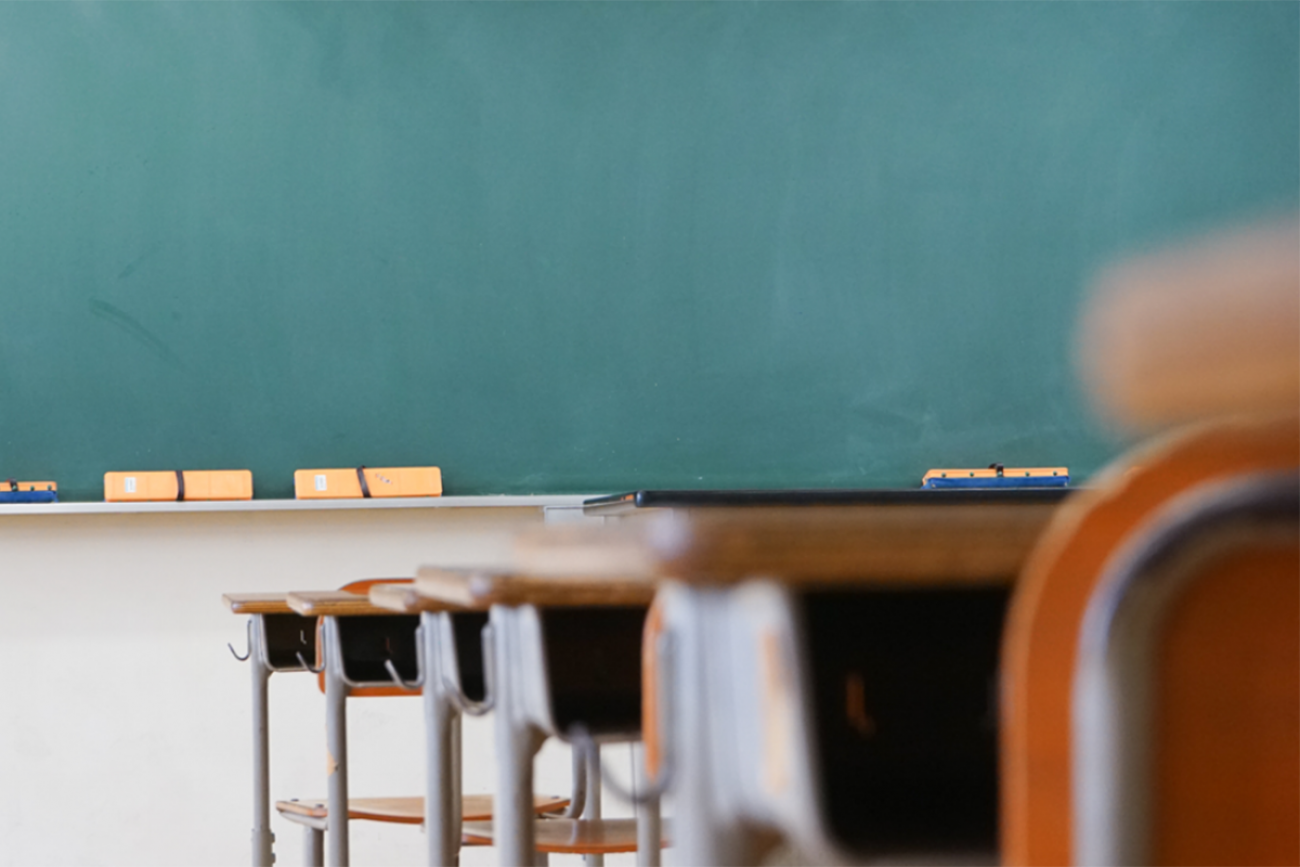Michigan schools reopened. Then came a spike in COVID outbreaks

April 1: Michigan schools cheered when sports came back. Then came COVID outbreaks.
March 30: COVID outbreaks jump 20 percent in Michigan schools. More closures ahead?
Coronavirus outbreaks are skyrocketing in Michigan schools, with some districts retreating to fully online learning just weeks after Gov. Gretchen Whitmer’s March 1 deadline urging all schools to reopen classrooms.
Data released Monday by the Michigan Department of Health and Human Services revealed a 30-percent increase in one week in cases connected to new or ongoing coronavirus outbreaks tied to middle and high schools, rising to 1,412 staff and students from 1,085.
New and ongoing elementary school outbreak cases rose 23 percent in the past week, to 169 cases from 137.
Related:
- COVID vaccine for kids edges closer to reality, as cases surge in Michigan
- First person: Teaching in COVID classroom ‘miraculous’ but ‘unsustainable’
- Coronavirus Tracker | 3,576 new cases on Tuesday, positivity rate hits 12%
- As COVID spread, far fear Michigan high school grads enrolled in college
- Whitmer: COVID tests for student athletes, but more fans for Detroit Tigers
The outbreaks may be tied to highly contagious coronavirus variants. There are now more outbreaks than on Nov. 15, when Whitmer ordered middle and high schools to go fully remote for three weeks.
When she made that announcement, there were 777 staff and students who had tested positive in new or ongoing school outbreaks, half the number as now.
While more schools may lurch back to homebound learning as outbreaks spread, state officials indicated Tuesday that there are no current plans for another statewide pause in in-person learning.
State officials are “very concerned” but “want schools to be able to remain open for in-person learning and for students to be involved in extracurricular activities, including sports,” said Lynn Sutfin, a state health spokesperson.
The increase at schools mirrors an overall surge in the state, where weekly cases have more than tripled to more than 19,000 from just over 6,000 in mid-February.
And after weeks in which less than 4 percent of COVID cases were positive, 12 percent were so on Tuesday, a clear sign of community spread of a disease that has killed nearly 16,000 people in Michigan.
“The community spread is being mirrored by the schools,” said Erik Edoff, superintendent of L’Anse Creuse Public Schools in Macomb County, which now has an outbreak involving three students at a middle school. “There’s definitely been an uptick in recent weeks.”
The rise in cases comes on the heels of parent groups, high school sports teams and GOP leaders urging Whitmer to pressure schools to reopen, saying classrooms are comparatively safe from the coronavirus.
By the beginning of March, 97 percent of traditional public school districts were offering an in-person option, according to state data.
Now, some schools are backpedaling.
In Utica Community Schools in Macomb County, Eisenhower High School on Tuesday went fully remote until at least April 19 after the school reported 40 positive cases and 400 students and staff in quarantine. Roscommon High School students returned to class Tuesday after being fully remote for more than a week because of students who were infected or in quarantine.
In Oakland County, an elementary in Walled Lake went back to homebound learning last week because of a COVID spike, and all three high schools in the Waterford School District are shuttered through Friday.
Stephen Bigelow, superintendent of Bay City Community Schools, told Bridge Michigan he “would not be surprised” if more schools and districts retreat to fully remote learning in the coming weeks.
In Bay City, two school buildings have switched from in-person learning to fully remote through April 7, after the district’s spring break, because of COVID-19 cases and quarantines.
“I’m worried about spring break,” Bigelow said. “There’s definitely something going on in our area.”
Variants playing role
Michigan has had 908 documented cases of the B.1.1.7 variant first discovered in the United Kingdom — the second most in the United States — and it has been detected in most of the counties with rising school outbreaks.
Because testing for variants can take over a week and is expensive, there’s no definitive number of them in Michigan. But officials say the fast spread of cases lead them to believe they’re helping prompt the surge.
The Centers for Disease Control and Prevention recently recommended that students could be spaced 3 feet apart, rather than in 6. Michigan has adopted those guidelines, but the recent surge may cause some to consider.
“We think right now is not the best time to do that,” said Dr. Mark Hamed, the medical officer for Huron and Sanilac counties in the Thumb.
The Roscommon schools just ended six consecutive days of remote instruction that was required after ordering 150 students to quarantine following an outbreak that started among the district’s basketball and wrestling teams.
In fact, the hotspot of new infections in northern Michigan contains most of the districts that Roscommon’s teams compete against, Superintendent Catherine Erickson said.
In the past, students who tested positive were sent home and their peers asked to quarantine, Erickson said, and none of those peers tested positive.
But with this outbreak, she said students were infecting fellow students — a possible sign of the variant which is known to be up to 50 percent more transmissible.
In Calhoun County, there are three ongoing school outbreaks and three new ones — all at high schools. County Health Officer Eric Pessell said he believes variants are causing the jump in cases.
“In the past, our outbreaks were along the line of two-to-four people, now we are seeing four-six-eight people per outbreak,” Pessell said.
State records show there have been 44 confirmed B.1.1.7 cases in the county, the fourth-most in the state.
Five districts in Huron County have outbreaks and there are 10 school outbreaks in neighboring Sanilac and St. Clair counties where variant cases have also been detected.
“We were kind of caught off-guard by this one,” said Joseph Candela, superintendent of the Ubly schools in Huron County, where 30 staff and students have tested positive.
Nearly 30 percent of the 412 coronavirus tests in the past week in Huron County have come back positive. It’s the highest rate in the state.
Spring fever?
Variants aren’t to blame for outbreaks in Kent County, however, where officials said contact tracing is linking cases to parties and students getting together outside of school.
“We know kids are feeling spring fever,” said Gillian Conrad of Berrien County’s Health Department.
Although youths are less likely to get seriously ill, they can still infect others, including older people for whom the disease is more lethal, Conrad said.
“We are in a race against time to get vaccines rolled out,” she said.
One thing helping schools stay open now, when many closed in the fall during the last COVID spike, is that many teachers are now vaccinated.
L’Anse Creuse had to close its buildings in November because the district ran out of teachers to fill its classrooms and couldn’t find substitute teachers.
“Every staff member who wants to be vaccinated has completed their second dose,” said Edoff, the superintendent.
The state will require coronavirus tests for school athletes beginning April 2. It is also offering educators voluntary testing options and setting up pop-up testing with school districts following spring break, said Sutfin, the state health spokesperson.
“With variants circulating in Michigan and across the country, it is important that Michiganders of all ages double down on the things that work including wearing masks, washing their hands, social distancing and avoiding crowds,” Sutfin said.
Michigan Education Watch
Michigan Education Watch is made possible by generous financial support from:
Subscribe to Michigan Education Watch
See what new members are saying about why they donated to Bridge Michigan:
- “In order for this information to be accurate and unbiased it must be underwritten by its readers, not by special interests.” - Larry S.
- “Not many other media sources report on the topics Bridge does.” - Susan B.
- “Your journalism is outstanding and rare these days.” - Mark S.
If you want to ensure the future of nonpartisan, nonprofit Michigan journalism, please become a member today. You, too, will be asked why you donated and maybe we'll feature your quote next time!






